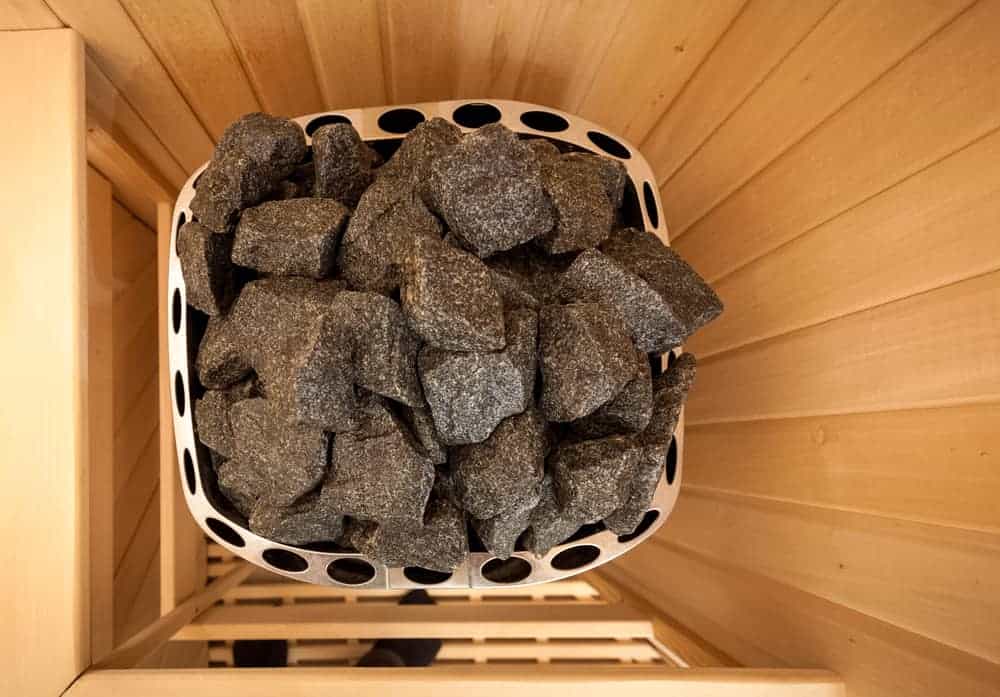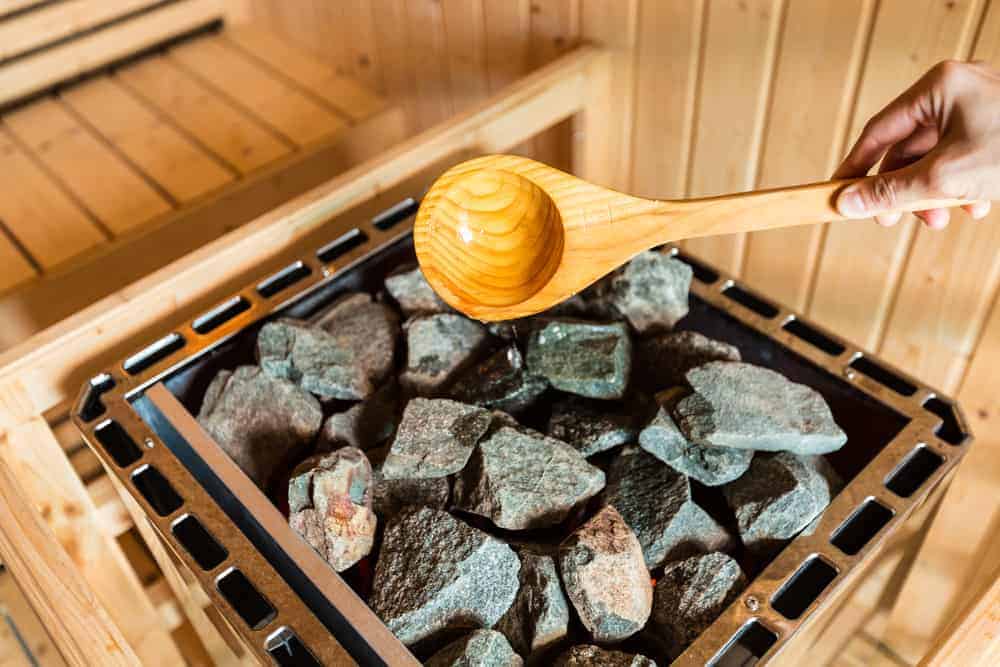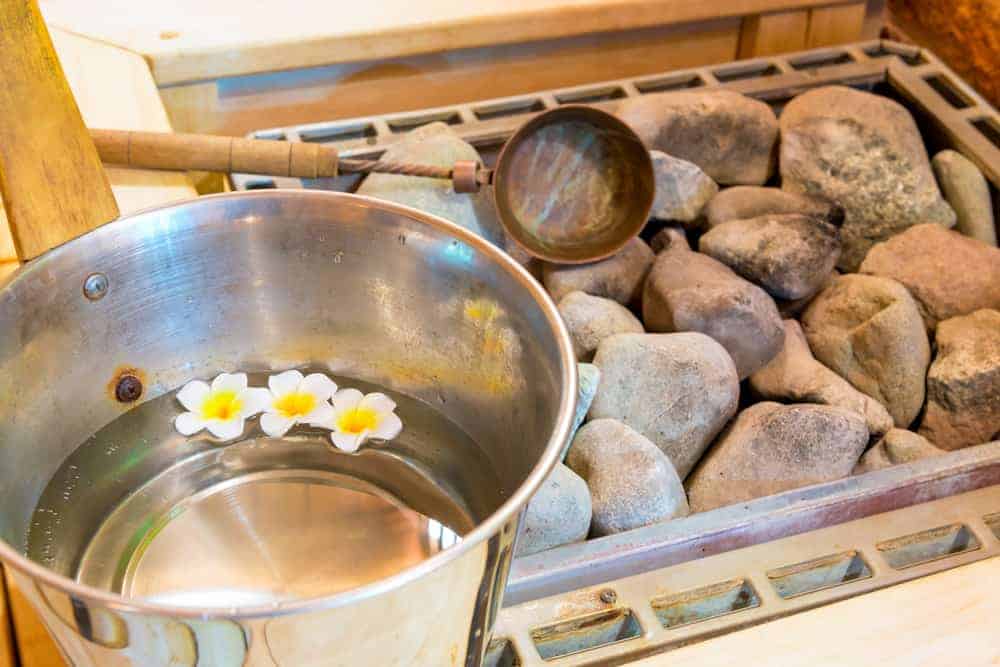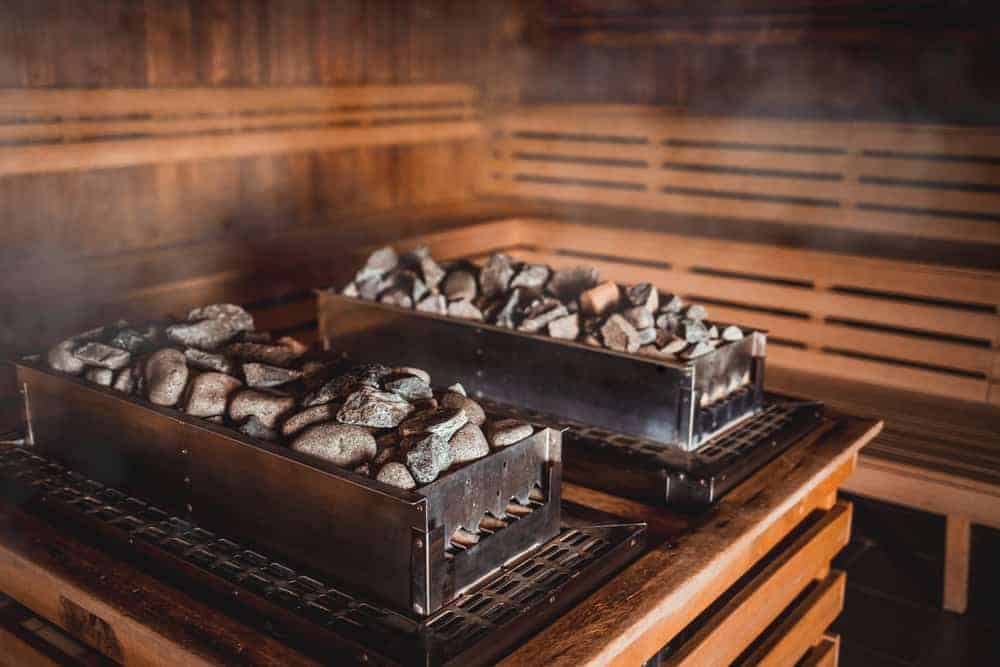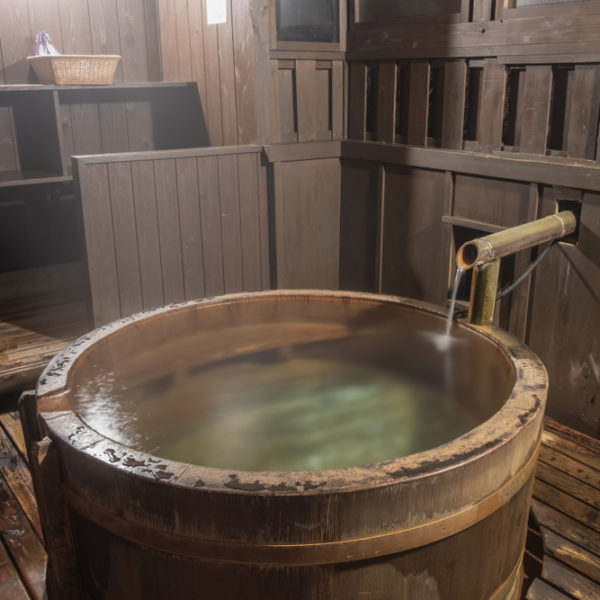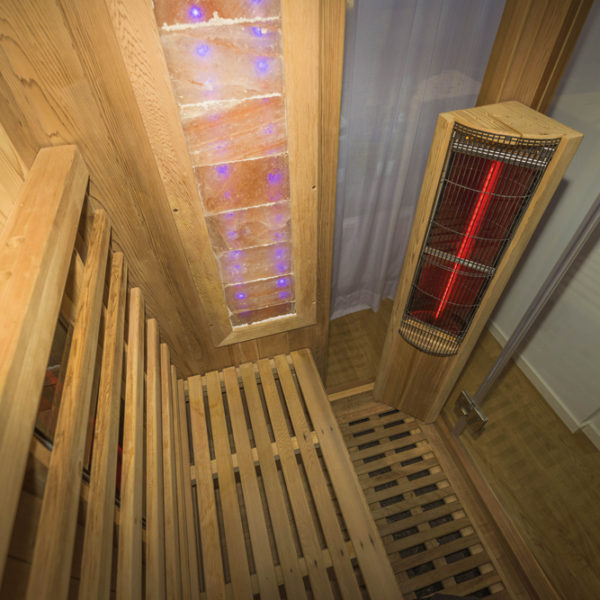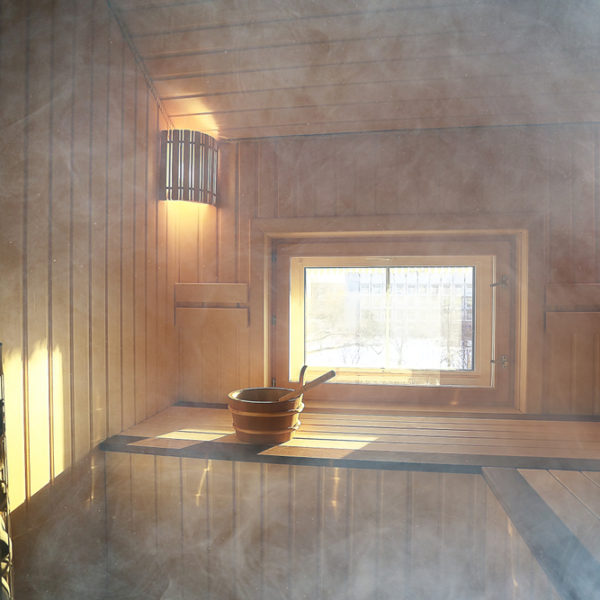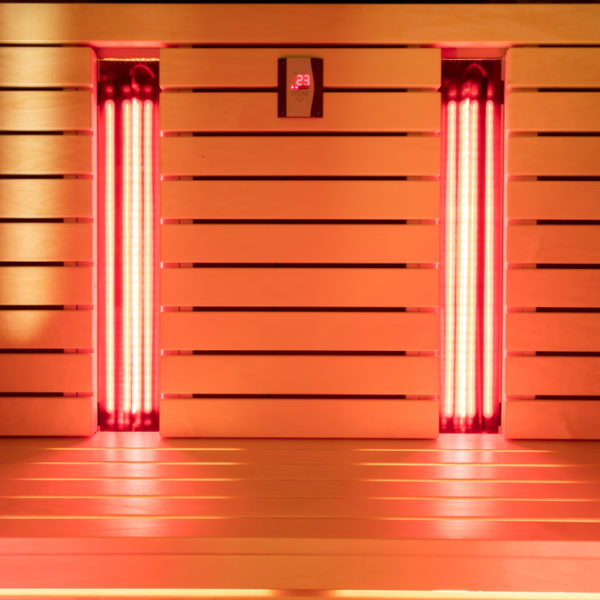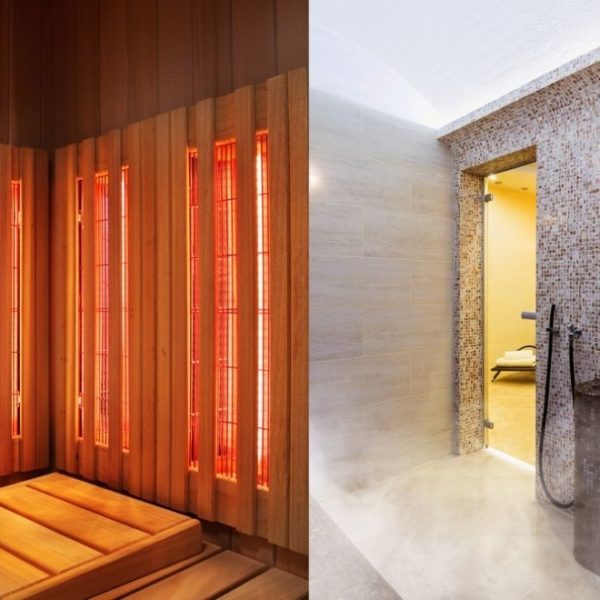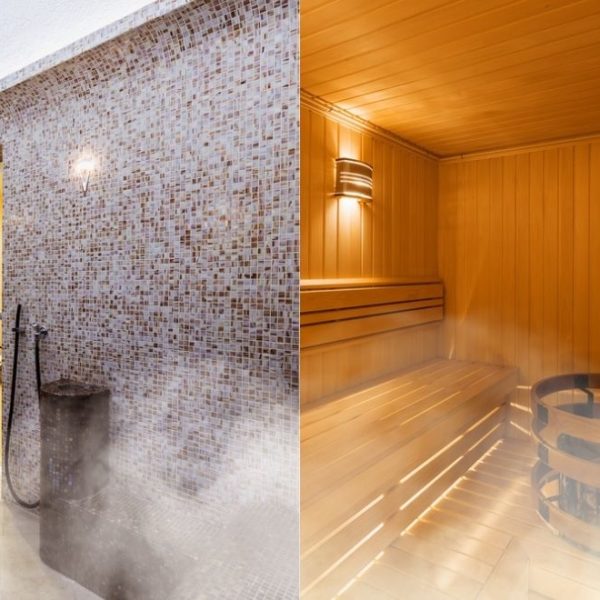So, after weeks of pampering yourself at different day spas and wellness clinics, with the excuse of trying out different types of saunas, you have finally decided to bring the sauna experience into your home.
You may have already placed your sauna of choice on order, or you may be in the final stages of making your final decision, but you have no clue what sauna rocks are.
This article will serve as a simple guide as to the different types of sauna rocks available and how to make a selection for your sauna heater.
What Are Sauna Rocks?
The stones in the sauna stove are known as kiuaskivet; however, in Finland, a significant term in the sauna culture, otherwise known as loyly, pronounced /lowlee/, describes the therapeutic steam that dances through the air once a ladle gently pours water over the sauna rocks.
Do All Sauna Types Use Sauna Rocks?
Except for infrared saunas, all conventional steam saunas utilize sauna rocks. For purposes of clarity, from this point on, I will refer to wood-burning, electric, or gas-heated saunas as traditional steam saunas.
In essence, the science behind steam saunas remains identical; regardless of the heating method, traditional saunas use convection to transfer heat throughout the room.
Convection is the transfer of heat through the movement of air. Whether you choose the classic design of a wood-burning heater or opt for an electric or gas model, a heating plate warms a collection of carefully stacked sauna rocks that transfer heat to the rest of the space.
And, I think that if the Finnish have dedicated a particular word for sauna rocks, they must be a pretty important feature of the sauna experience.
Why Do I Need Sauna Rocks?
Generally, from a cold start, it will take a wood-burning, electric, or gas heater approximately between thirty and forty-five minutes to heat your sauna enclosure to the selected temperature.
Once preheated, you can generally turn off the heater for your traditional sauna just before entering your first session. We are primarily talking about home installations where the unit will not be running for hours on end as it would in a public center that accommodates significant numbers of clients daily.
Provided that you use the proper type of sauna rocks, they can help maintain the operating temperature of your sauna while allowing you to save some green stamps on your energy bill.
Using a kauha, Finnish for sauna ladle, to pour water over the sauna rocks will cool the stones down; however, this will simultaneously raise humidity levels by generating soothing steam in the sauna.
What Are The Best Type of Sauna Rocks?
If you can think back to your Earth Science class in school, you will likely remember the term igneous. Perhaps within the same learning module, you even conducted a memorable science experiment using baking soda and vinegar to reproduce a volcanic eruption.
If I have successfully jogged your memory to elementary school days, you recall that igneous rock formation occurs after a volcano’s magma cools down and solidifies.
REMEMBER: Do not attempt to touch these rocks until they have cooled down completely- when heated, they may reach temperatures between 500 and 800 degrees Celcius (932-1472 degrees Fahrenheit, respectively).
Igneous rocks esteem great thermal mass, so even though it takes a considerable amount of time to heat up, they are very well suited to absorb and store heat energy.
1. How To Choose The Best Sauna Rocks
When selecting rocks for your sauna heater, you must opt for non-porous stones like granite, peridotite, olivine, and vulcanite. These are all excellent options because their surfaces are generally heavy and solid.
DANGER: Stay clear from porous rocks as these absorb water. When exposed to high heat, the moisture inside the stones will turn into steam, cracking the rocks, or even worse, causing the rocks to explode and shatter, which can be extremely dangerous to anybody inside the enclosure.
If you so choose, you may even walk down to your local river or lake to collect the stones. Often, this can be a great option as river rocks are generally smoother and free of cracks or other surface imperfections.
Although this could be a good option, the rocks should not be too smooth because the water will slip off before having the chance to warm up enough to produce an adequate amount of steam.
In a nutshell, the rocks need to be non-porous, free of cracks, yet still have a rough surface.
2. Optimal Size of Sauna Rocks
Any rock smaller than a golf ball should be avoided because smaller rocks cannot retain heat for extended periods. However, larger stones are also undesirable for the efficient heating of your sauna.
A medium-sized stone will be easier to arrange inside your sauna heater and will be most suitable for heat retention. As a general rule of thumb, sauna rocks should be about the size of your fist or baseball.
In addition, it would be helpful if you consider the number of stones placed inside your heater. There needs to be plenty of space between the sauna rocks for proper airflow.
If the stones are too tightly stacked together, airflow will be restricted; however, spreading them apart too much will cause the water to trickle off the rocks and into your heater quickly.
When you pour water over the sauna rocks, there should be adequate time for the water to heat up and produce the desired levels of steam and humidity.
This timing results from a combination of several variables, including the type and size of rocks used along with proper airflow inside your heater.
3. Do I Have To Replace My Sauna Rocks?
Yes- replacing your sauna rocks is part of long-term sauna maintenance. To help regulate the routine wear of the sauna rocks, you can rotate the stones regularly. To do this, place the rocks closest to the heating plate on top and vice versa.
-
Sauna Rock Cleaning
In terms of cleaning sauna rocks, you do not need to do much more than placing them underneath clean running water until the water is clear. Then, to dry them, you can lay them back inside your heater until subsequent sauna use.
You can generally clean the rocks once a month; however, you can certainly do it once a week if you use your sauna very often or include aromatherapy oils in your session.
-
Replacement
SaunaSamurai suggests planning out a yearly rock replacement schedule depending on how often you use your sauna. For example, “if you are using your sauna once a week, replace your rocks once a year – twice a week, twice a year, and so on.”
In between rock rotation or replacement, you should regularly inspect the stones for the following signs of wear:
- the rocks show visible cracks or other deformations
- preheating time is significantly longer than usual
- the rocks become discolored
- the rocks disintegrate to the touch, or
- if you notice any small rock fragments lying within or around the sauna heater
4. How Often Should Water Be Splashed Over The Rocks?
As I mentioned earlier, splashing water over the heated sauna rocks to create steam will cool down the rocks faster than if you just basked in the dry heat.
There is an art to knowing how much and how often to splash water over the heated sauna rocks. The amount of steam generated may be restricted if not sprayed enough; however, too much water can prematurely cool down the sauna space.
If you are worried about possibly lowering the sauna temperature too fast, you could use slightly warmer water in the kiulu, or a small bucket, for splashing onto the rocks.
Another worry to consider is that splashing the rocks too often may flood the sauna heater or the burning firewood. In addition, remember not to begin spraying the rocks with water until the sauna has had adequate time to reach its operating temperature.
Lastly, as you find your particular rhythm for sprinkling water upon the heated stones, please be aware that irregularly heating and cooling down the rocks can cause them to fatigue much faster than a more methodological approach.
So, for the best sauna experience, don’t spray too much water or too often.
5. Most Convenient Way to Find Sauna Rocks
If searching for your igneous rocks does not sound appealing or impossible due to location restrictions, the next best option would be to visit a local authorized dealer.
NOTE: Sauna rocks are pretty heavy, so you will need to consider additional shipping costs in your sauna maintenance budget if the stones cannot be locally sourced.
Our smaller towns and villages may not support a facility with such spa-like amenities for many of us. If that’s the case, then an online store can serve as the most convenient alternative.
Popular Sauna Rock Options
First, you can consult the manufacturer of your sauna heater for recommended sauna rocks compatible with their product. It may just be the case that they even offer their line of sauna rocks.
Potentially, your preferred sauna heater company may even include a box of stones with your purchase. If so, you may have enough rocks to cover the first year of your at-home sauna use.
In any case, here are some popular options for sauna rocks:
1. HARVIA Sauna Stones
Harvia Sauna & Spa is a Finnish-owned and operated global leader in the sauna industry. Since the 1950s, the Harvia Group has expanded its portfolio to accommodate a wide range of sauna preferences.
More specifically, Harvia offers a variety of sauna options, including infrared technology, steam spas, different heaters, and a complete list of accessories.
Lucky for you, Harvia’s comprehensive list of goodies includes a range of quality sauna rocks. For your consideration, you may choose between a rounded or split-face stone.
In addition, you have the option to choose between three different size stones: 5-10cm, 10cm, and 10-15cm in diameter. Each box of rocks holds twenty kilograms worth in weight. Please be aware that depending on the size of your heater, you may need more than one box.
A box of Harvia Sauna stones will run you just under $40.00 without shipping.
2. TyloHelo Sauna Stones
With over 170 years of combined experience, TyloHelo is a Nordic Sauna that again offers a comprehensive product and service p[ortfolio, including sauna design, accessories, steam rooms, and infrared sauna technology.
TyloHelo offers a directory service for a dealer nearest you. If you are interested to learn more about their top-quality split-face sauna stones, please do not hesitate to contact a dealer for further inquiry.
3. SaunaSteine Sauna Stones
As a world-class provider of Finnish sauna supplies, German-based SaunaSteine had the Federal Institute for Geosciences and Natural Resources study and release an expert opinion regarding their sauna stones.
Studies revealed that the optimal stone composition included both the minerals olivin and diabas. Similar to their Finnish cousins, SaunaSteine offers both rounded and split-face rock options.
This company offers sauna rock packages in both ten and twenty-kilogram weight options. Therefore, prices may range between $12 and $64 per box, based on size, weight, and whether it is for a residential or commercial setup.
Conclusion
Remember that choosing the most suitable rocks can have a significant impact on your sauna experience. In addition, higher-quality stones are also advantageous due to their cost-effectiveness.
Purchase a rock from one of the recommended company’s I listed, and you are sure to treat your sauna heater to some instant heat-play. At the same time, you benefit from a long-lasting and durable rock able to retain heat and adequately produce the steamy environment you seek.
Please include all questions or concerns you may have regarding sauna stones in the comment section below.
